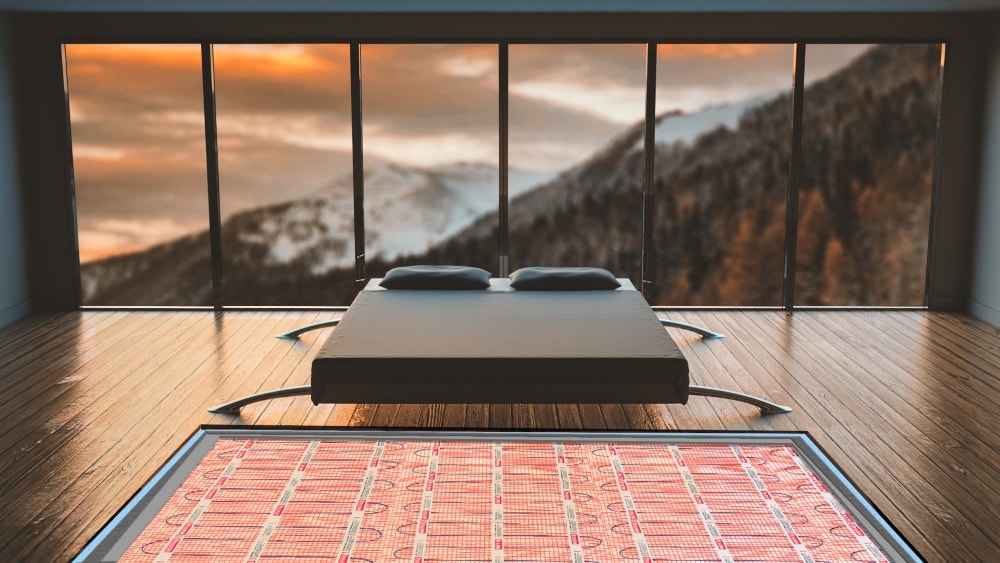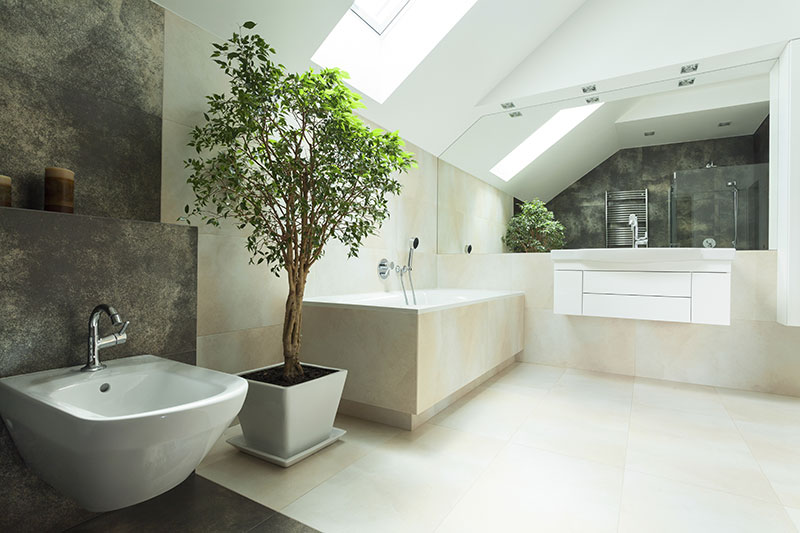Getting ready to build a new home or start a remodeling project? Among the big decisions you’ll have to make is how the space will be heated. The most popular options today are forced air and radiant floor heating. Each has pros and cons that need to be considered before making your final choice, and this article will review the highlights of each.
Radiant Floor Heating
Radiant floor heating is a method of heat distribution, not the source of the heat. The heat is provided by hot water or electricity and distributed through the flooring to the room via infrared waves that warm the people and objects in the room, rather than the air.
Pros
Low Cost
The components of an electric underfloor heating system are competitively priced with other forms of heating, but the true savings comes through lower installation costs and long-term efficiency. Studies have shown that radiant floor heating is as much as 30 percent more efficient than forced air, and with the addition of a Smart thermostat, additional savings are realized by establishing zones that can be individually controlled. These zones are heated only when being used, eliminating the need to heat the entire home to make one or two rooms comfortable.
No Maintenance
Electric radiant heat systems are essentially maintenance free since there are no mechanical elements to break down. Since these systems do not move air, there are no filters that require replacement every month.
Low Profile
Radiant heat is supplied through a system installed beneath the finished floor. Electric systems require the least amount of additional floor height for installation – some requiring an inch or less. This makes them the best option for a remodel where overall room height would prohibit the addition of a water-based system that could need two or more inches added to the floor.
Noise-Free
Electricity is silent. Forced air systems make themselves known every time they turn on, and in smaller rooms, the additional noise can be a nuisance.
Non-Allergenic
Electric radiant heat operates without fans, so dust and allergens are never blown into your room.
Even Heating
One of the primary benefits of underfloor radiant heat is the way a room is evenly heated. Over 50% of the heat developed is through infrared waves and the heat stays at the level of human activity. Since the entire floor is heated, the whole room benefits from the enhanced balanced heat distribution.
Efficiency
Radiant floor heat reaches design temperature quickly and cools down slowly, reducing the uncomfortable cool spots that forced air systems create in a room. This feature makes the system operate more efficiently, saving money and increasing the useful lifespan of the entire heating system.
Cons
Flooring Needs Replacement for Installation
Installing an underfloor radiant heating system will require the removal of the existing finished floor material. However, if your project is a remodel this may not be a substantial roadblock since you may be anticipating replacing the flooring during the remodel.
Slightly Elevates Floor Height
Low profile radiant floor electric systems will require that the floor be raised, but the required amount is around one inch. With the exception of an extremely low ceiling, the additional height should not be a problem for most projects.
Forced Air Heating
Forced air systems are usually HVAC systems that are ducted, or split systems that are ductless. The configuration for ducted systems in many homes is an outside unit where the freon circulates and an inside furnace that uses gas or electricity to produce the heat. The heat is then pushed to all the rooms through ductwork and is delivered through the floor or ceiling depending on the design.
A ductless split system has an inside and outside unit but there are no ducts as the name implies. The heat is generated at the inside unit and pushed through the room by a fan.
Pros
Can Purify and Condition the Air
As the air is circulated through the furnace, it passes through a filter which helps purify the air in the home. Some systems also condition the air by adding a humidifier or dehumidifier, depending on the geographical location of the home. Heat pump units also have the advantage of supplying air conditioning to the home using the same equipment as the heater.
Rapid Comfort
HVAC systems can give almost instant response to the need for heat. If the system is powered by electricity, a bank of electric coils are energized to provide immediate heat. In the case of a gas system, the flame produces heat without a warmup period.
Compatibility With Existing Systems and Hardware
Forced air heaters have been the standard in most homes for decades and qualified installers are readily available when needed. Most homes are framed with the understanding that ductwork will need to travel through structural members in the floor and attic to provide the home with heat.
Cons
Relatively High Maintenance
HVAC or forced air units have to be serviced at least bi-annually to stay operating at peak performance. The entire system is mechanical meaning there are multiple opportunities for equipment failure. As the system ages the ductwork will need to be cleaned and perhaps resealed to ensure that there are no leaks.
Noisy Operation
The entire operation of an HVAC system creates noise. The outside unit is very loud and if close to living spaces, can produce considerable noise inside the room. The inside unit also contains a fan and is a source of noise. Finally, the air being pushed through the ductwork also creates noise at a volume that is noticeable.
Ductwork Takes up Significant Space
In a new construction home, the ductwork is usually run through trusses in the floor and ceiling, but in a conventionally framed home, the ducts are often run below the joists and need to be boxed in, taking up valuable headroom – especially in the basement. In the case of a remodel, adding ductwork may not be possible.
Mold, Mildew, and Allergy Issues
HVAC systems direct the heated air through a series of ducts that accumulate layers of dust and bacteria over time. These allergens are distributed throughout your home every time the system turns on. Filters help reduce the amount of dander and other particles that are released into your home, but they cannot stop them all.
Central AC is Not Always Commonplace
Some forced air systems only provide heat, especially in the northern regions of the U.S., where air conditioning is not considered necessary.
Choose Radiant Floor Heating for More Efficient Heating
After weighing the pros and cons, radiant floor heating is the best option for most homeowners. The systems offered by Warmup provide your home with comfortable heat that is efficiently produced and effortlessly maintained. Match up one of our systems with a Smart thermostat and increase your savings by only heating the areas you are using.
Contact us today for a free quote and start exploring your options.








